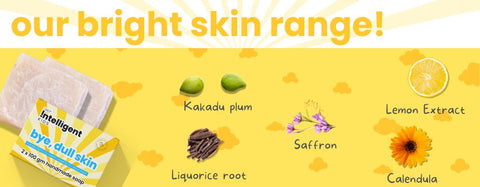Safflower oil
What is safflower oil? The herbaceous plant safflower was first found around the Rio Grande by the early colonies of Spain. Safflower was used by the Spanish people as a substitute for the expensive herb saffron. But later on, it became popular for providing the highly beneficial safflower oil. It has distinct characteristics suitable for several purposes. Safflower oil benefits the skin when used in proper proportions. It is a rich source of essential fatty acids that boost the immune system and enriches the skin. Cold pressed safflower oil has ample benefits that one can avail by using it daily.
Scientific name: Carthamus tinctorius
Safflower oil Formula (Chemical composition): Stearic acid (1.62%), linoleic acid (81.5%), linolenic acid 0.40%, palmitic acid (5.53%), oleic acid (11%)
Safflower oil uses & benefits
Alongside boosting the immune system, the oil is a good agent for adding to the skincare regime and for removing body hair. Below are some of the safflower oil benefits on skin and hair:
Safflower oil for skin
- Safflower oil benefits for skin include reducing the chances of skin ageing. It has vitamin E, an agent containing anti-oxidants in plenty. These antioxidants defend the skin against free radicals that attack the collagen molecule on our skin. Collagen keeps our skin firm and toned, preventing wrinkles on the skin.
- When you often go out in the sun, the ultraviolet rays enter your skin and cause damage at a cellular level. This on the other hand ends up rupturing the mitochondrial cells. You lose the elasticity of skin when such a reaction happens. Safflower oil covers the damaging effects of the UV rays.
- You can use safflower oil for skin when you have minor wounds. It has healing properties that fasten the process of cell replenishment. It also creates a matrix on the wound that enables cell repair. Besides, it is a potent reducer of inflammatory reactions on the skin and hence, gives positive results when used on skin allergies.
- Safflower oil composition includes oleic acid that also helps reverse damages caused by free radicles long ago. So, it can be used for light scars.
- Linoleic acid is a vital part of safflower oil composition that promotes moisturisation of the skin. This leaves the skin toned and supple.
- Anti-flaking property is another of the many safflower oil benefits for skin. This job is also done by linoleic acid which maintains the integrity of the upper dermis layer preventing skin flaking.
- Besides cell repair, it also gives positive results when used on acne because of its non-comedogenic properties. Safflower oil for acne promotes its reduction as it contains anti-inflammatory particles. The consistency of this oil is very thin. This enables it to cleanse sebum and improve circulation in the skin.
- Safflower oil for skin that is dry in nature helps with hydration. It resides over the skin for a long time and keeps the skin from drying.
- Several medicated creams also have safflower oil as a key ingredient as it can treat skin conditions like eczema well. However, it might not serve the purpose when the condition is severe.
BUY Tuco Intelligent Bye Dry Skin Soap for kids today!
Safflower oil for hair removal
- Safflower oil for hair removal is used by people with sensitive skin. The combination of multiple vitamins makes it a powerhouse for skin revitalisation.
- The enriching components ensure that no cell is damaged in the process of hair removal.
- Safflower oil for hair removal also helps in reducing ingrown hair. It keeps the skin smooth and helps to soothe it. Regular use of it as a hair removing agent enables you to have skin free of rashes and irritations.
- This natural oil, especially the cold pressed safflower oil variant, disintegrates the follicles of hair and makes it feeble from the roots. With the regular application, the growth of body hair substantially decreases.
- It is a good source for getting rid of facial hair as it comes with fewer to no side effects on the skin when applied in the recommended dosage.
- Unlike hair removal creams available on the market, this oil does not darken the skin. It has no chemicals synthesised in labs and has no harsh effects on the skin.
Check out our Skin Brightening range of products:
How to apply/use Safflower oil
To optimise the effect of safflower oil use the following techniques.
Safflower on skin
- Combine a few drops of safflower oil with honey and oatmeal.
- Mix the ingredients well and apply them throughout the face.
- Keep it untouched for 10 to 15 minutes or until it completely dries.
- Rinse the face thoroughly and do not use any other product for at least half an hour.
- This makes the skin feel smooth and toned. It prevents rashes and acne if used at least twice a week.
Safflower on the body hair for hair removal
- Mix equal quantities of thanaka powder, a herbal mixture with cold-pressed safflower oil. Form an even-textured paste out of it
- Apply this paste directly to the hairy areas of the skin. Keep rubbing thoroughly until the oil gets absorbed in the deep layers of skin completely.
- After complete absorption, let it sit on the skin for over 4 hours. During this period avoid using any other product on the skin.
- To get the best results use the oil at night before going to sleep.
- Use this on a daily basis and see a reduction in facial and body hair growth gradually.
Safflower oil side effects
Safflower oil uses are numerous but improper use can have side effects.
- You need to know what is safflower oil before using it because it is not a regular body or face oil. The quantities suitable for topical use are different from other body oil. Only a few drops of it is enough for use. Larger quantities may hamper the integrity of the skin.
- If you use the oil on the skin multiple times a day, there is a high chance of you facing allergic itchy rashes.
- For hair removal, if you apply the oil several times a day, the skin of the body may react with the components of the oil. This on the other hand may damage good skin cells.
Precautions while using Safflower oil
Take the precautions below to enjoy the benefits of safflower oil.
- Take only a few drops of this natural oil and mix it with other organic substances for use. Do not use larger amounts to avoid allergies.
- The oil should not be used in its concentrated form. Always mix it with other components to get the best results.
FAQs on Safflower oil:
- What is the difference between sunflower oil and safflower oil?
Safflower oil vs sunflower oil is a debate that commonly happens because they are similar-looking words. However, the sources are different and the uses too. Sunflower oil is extracted from sunflower on the contrary safflower oil is extracted from the seeds of the safflower plant. Besides, unlike safflower oil, sunflower oil is not ideal for use on the skin.
- Can safflower oil be used for hair removal?
Yes, safflower is widely used for hair removal as it has fewer side effects than other agents.
- Can I use safflower oil directly on my acne?
No, you cannot use safflower oil for acne solely. You have to mix it with other substances before using it on the acne-affected areas.
- What is better for oily skin, safflower oil or sunflower oil?
When it comes to safflower oil vs sunflower oil in the case of skincare, safflower wins. It is a good option for oily and acne-prone skin because it has a comedogenic rating of zero.
- Where should I incorporate safflower oil in my skincare regimen?
Use it twice a week with other substances like turmeric and rice flour powder. Make a pack and apply for 15 mins. Later rinse it for bright and soft skin.




